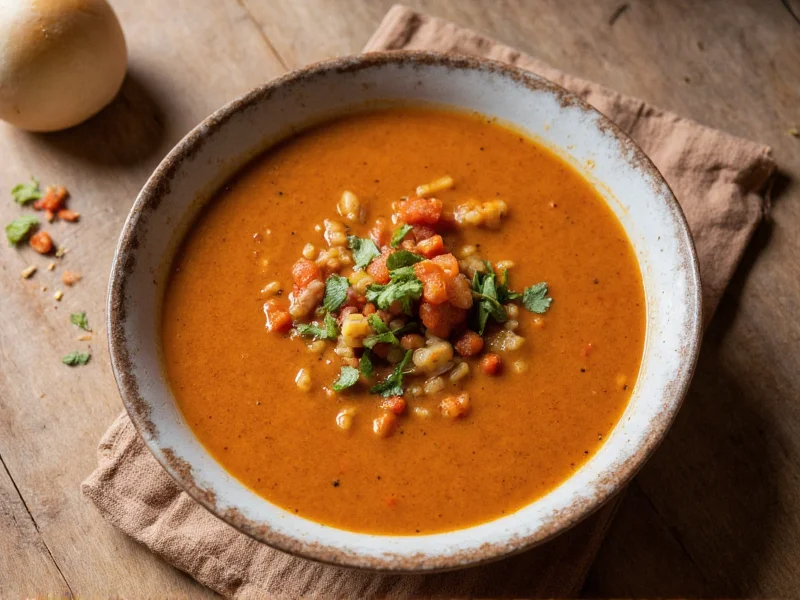Understanding the \u201cShe Soup\u201d Confusion
\n\nMany searchers mistakenly type \u201cshe soup\u201d when seeking information about shiitake mushroom soup. This common misspelling stems from the phonetic similarity between \u201cshe\u201d and the first syllable of \u201cshiitake.\u201d Proper pronunciation clarifies the distinction: shiitake (\u0161e-t\u0101-k\u0113) derives from Japanese \u201cshii\u201d (oak tree) and \u201ctake\u201d (mushroom), reflecting its traditional growth on oak logs.
\n\nShiitake mushrooms have been cultivated in East Asia for over 1,000 years, prized in Chinese and Japanese cuisine for both flavor and medicinal properties. Unlike common button mushrooms, shiitakes develop a deep, savory umami profile when dried, making them ideal for broths. This unique characteristic explains their prominence in traditional Asian soups compared to other mushroom varieties.
\n\nEssential Components of Authentic Shiitake Soup
\n\nTraditional shiitake soup relies on three critical elements: high-quality dried shiitakes, proper broth preparation, and balanced seasoning. Dried shiitakes contain significantly higher concentrations of guanylate, a natural flavor enhancer that creates the signature umami depth when rehydrated. The soaking liquid becomes the soup\u2019s flavor foundation, requiring careful straining to remove sediment while preserving taste.
\n\n| Ingredient | \nTraditional Role | \nModern Substitution | \n
|---|---|---|
| Dried shiitake mushrooms | \nPrimary flavor base (soak 20+ minutes) | \nFresh shiitakes (less intense flavor) | \n
| Whole ginger slices | \nWarms broth, counters mushroom earthiness | \nGinger paste (use sparingly) | \n
| Scallions | \nAdds freshness, visual contrast | \nChives (similar flavor profile) | \n
| Soy sauce | \nDepth without overpowering | \nCoconut aminos (gluten-free option) | \n
Health Benefits Supported by Research
\n\nShiitake mushrooms contain lentinan, a beta-glucan compound studied for potential immune-modulating effects. Clinical research published in \u003cem\u003eInternational Journal of Medicinal Mushrooms\u003c/em\u003e indicates regular consumption may support healthy immune response. The mushrooms also provide ergothioneine, a potent antioxidant that protects cells from oxidative damage.
\n\nNutritionally, a 100g serving of cooked shiitakes delivers 22% of daily copper needs, 11% of selenium, and 8% of zinc \u2013 minerals crucial for enzymatic functions. Unlike many soup ingredients, shiitakes maintain nutritional integrity whether fresh or dried, though dried versions concentrate certain compounds up to 10-fold. This makes them particularly valuable in vegetarian and vegan broths seeking meat-like depth without animal products.
\n\nPerfecting Your Shiitake Soup Technique
\n\nProfessional chefs emphasize two often-overlooked techniques for superior shiitake soup: controlled rehydration and layered seasoning. Soak dried mushrooms in 160\u00b0F (71\u00b0C) water for precisely 20 minutes \u2013 hotter water extracts bitter compounds, while cooler temperatures yield weaker flavor. After removing mushrooms, simmer the strained soaking liquid with ginger for 15 minutes before adding other ingredients.
\n\nFor optimal texture, slice rehydrated shiitakes against the grain and add them during the final 5 minutes of cooking. This preserves their distinctive chewy \u201cmeaty\u201d quality. Many home cooks err by boiling mushrooms too long, resulting in rubbery texture. Adding a splash of rice vinegar just before serving brightens flavors without making the soup acidic.
\n\nVariations Across Asian Cuisines
\n\nRegional adaptations showcase shiitake soup\u2019s versatility. In Japan, \u003cem\u003emiso shiitake soup\u003c/em\u003e incorporates fermented soybean paste for added complexity. Korean versions often include zucchini and tofu, while Chinese interpretations might feature wood ear mushrooms and cloud ear fungus for textural contrast. Modern Western adaptations frequently incorporate coconut milk for creaminess or miso for depth in vegan preparations.
\n\nFor those exploring \u201chow to make authentic shiitake soup without meat broth,\u201d the solution lies in proper mushroom preparation. Combining dried shiitakes with kombu (dried kelp) creates a naturally savory base through glutamate synergy. This technique, used in traditional Japanese \u003cem\u003edash\u012b\u003c/em\u003e preparation, yields a broth with comparable depth to meat-based stocks.
\n\nFrequently Asked Questions
\n\nCan I use fresh shiitake mushrooms instead of dried?
\nYes, but dried shiitakes provide significantly deeper flavor due to concentrated guanylate. If using fresh mushrooms, increase quantity by 50% and simmer longer (15-20 minutes) to extract maximum flavor. For best results in \u201cshiitake mushroom soup recipe for beginners,\u201d combine half fresh and half dried mushrooms.
\nHow long does homemade shiitake soup stay fresh?
\nProperly stored in airtight containers, shiitake soup maintains quality for 3-4 days in the refrigerator. The flavor often improves after 24 hours as ingredients meld. For longer storage, freeze portions for up to 3 months \u2013 note that tofu may become slightly spongy upon thawing, so add it fresh when reheating frozen soup.
\nAre there allergy concerns with shiitake mushrooms?
\nShiitake mushrooms rarely cause allergies, but some individuals experience \u201cshiitake dermatitis\u201d \u2013 a temporary skin reaction from raw or undercooked mushrooms. Cooking thoroughly eliminates this risk. Those with mold allergies should consult physicians before consuming, as mushrooms are fungi. For \u201cheap vegetarian shiitake soup options,\u201d ensure all other ingredients align with dietary restrictions.
\nWhat\u2019s the difference between shiitake and other mushrooms in soup?
\nShiitakes contain 10 times more guanylate than button mushrooms, creating superior umami depth. Their texture remains firm after cooking, unlike creminis which become soft. Portobellos offer earthiness but lack shiitake\u2019s distinctive smokiness. For \u201ctraditional Asian mushroom soup recipes,\u201d shiitakes are preferred for their ability to stand up to strong flavors like ginger and garlic without losing character.
\nHow can I enhance shiitake soup\u2019s health benefits?
\nAdd garlic during the last 5 minutes of cooking to preserve allicin, and include a teaspoon of toasted sesame oil before serving to boost absorption of fat-soluble nutrients. For maximum \u201cshiitake mushroom health benefits in soup,\u201d use the mushroom soaking liquid as your broth base \u2013 it contains concentrated bioactive compounds not found in the solid mushrooms alone.
\n










 浙公网安备
33010002000092号
浙公网安备
33010002000092号 浙B2-20120091-4
浙B2-20120091-4